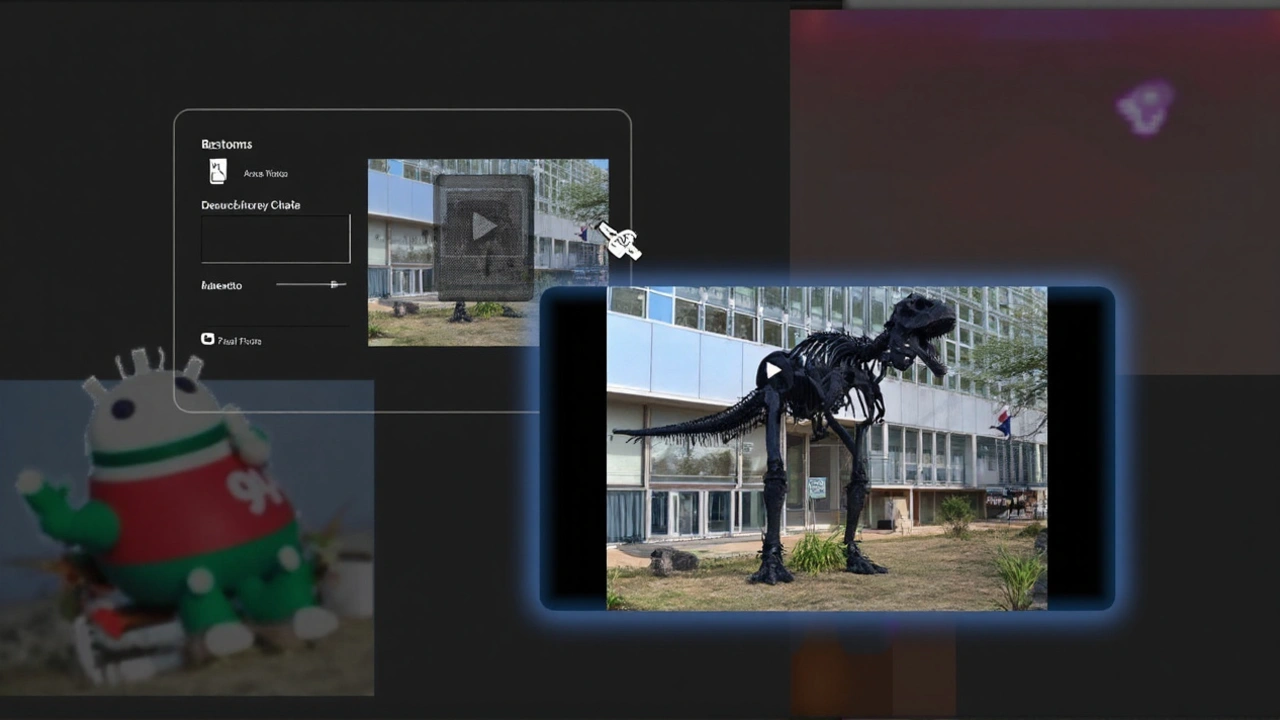Ever wish a photo could move on its own? Google’s latest AI upgrade makes that happen. The new Google Gemini photo-to-video engine grabs a static image, adds believable motion and a matching audio track, and spits out an 8‑second video clip in under two minutes. It’s currently a perk for Google AI Pro and Ultra plans, with a three‑month free trial floating on Google Cloud for curious testers.
How the Feature Works
The magic lives in Google’s Veo 3 model, a next‑generation video synthesis engine. You upload an image directly from your device or Google Drive, type a natural‑language prompt—like “make the dog chase a ball” or “show the car drift around a corner”—and the system translates that into motion vectors, fills in missing frames, and layers fitting sound effects.
Outputs are 720p at 24 fps, striking a sweet spot between visual quality and quick rendering. Because the clip is only eight seconds long, the AI can devote extra compute to making each frame look as realistic as possible, whether it’s a wagging tail or a ripple across water.
Google is rolling the feature out via the Gemini web app first, with Android and iOS apps slated for the coming weeks. Pixel 10 Pro owners already see the tool baked into their native Gemini app, showcasing Google’s push to fuse AI power with its flagship hardware.

Creative Ways to Use It
Content creators quickly found three hot use cases that stretch the tool beyond a novelty gimmick:
- Animating pets. Upload a cuddle‑ready photo of your dog or cat, add a prompt like “make the cat stretch and yawn,” and watch a lifelike clip emerge. The result feels more like a genuine moment than a CGI stunt.
- Product and vehicle demos. Marketers can turn a plain product shot into a mini‑advert—think a sedan drifting around a curve or a gadget spinning on a virtual table—without costly video shoots. The clips fit perfectly into social‑media feeds, where short, eye‑catching video beats static images every time.
- Landscape and portrait cinema. Photographers can breathe life into scenery by adding moving clouds, rustling trees, or gentle water flow. Portraits get subtle breathing or a breeze ruffling hair, giving a static portrait a whisper of motion while preserving its original composition.
Beyond these, the tool sparks fresh storytelling ideas. Imagine turning family vacation photos into quick “memory movies” or revamping old stock images for a modern ad campaign—all with a few clicks.
Google’s integration of the feature into its broader ecosystem means you can pull assets straight from Drive, edit them in Google Docs, or share the clip on YouTube with a single tap. While the service is locked behind a subscription for now, the free trial lets hobbyists test the waters before deciding if the AI‑generated videos are worth the cost.
All signs point to this being just the first step. As AI models get better at understanding context, future updates could lengthen clips, add higher resolutions, or let users fine‑tune motion details. For now, the Gemini photo‑to‑video tool offers a surprisingly powerful shortcut for anyone looking to turn a still image into a share‑ready video in minutes.

15 Responses
The Gemini photo‑to‑video engine runs on the Veo 3 model to create motion vectors from a still image.
What we witness is not merely a gimmick but an alchemical merger of imagination and algorithmic rigor, a true renaissance of the still medium. The prompt‑driven choreography feels like a digital oracle, translating human whimsy into kinetic poetry. It subtly challenges our complacent consumption of static imagery, urging us to reconsider the boundaries of visual storytelling.
I love how this tool democratizes dynamic content, letting creators of any skill level bring static shots to life. The inclusion of audio tracks adds an immersive layer that bridges the gap between silent photos and full‑blown video. It’s a collaborative playground for both designers and marketers alike.
From a cultural lens, this technology could redefine how we archive personal histories, turning family albums into living narratives. Philosophically, it raises questions about authenticity-does a generated motion dilute the original moment or enhance its emotional resonance? The speed of rendering, under two minutes, is a testament to how far computational aesthetics have come. It's a bold stride toward a future where every image can breathe on demand.
In the broader ecosystem of generative AI, Gemini's photo‑to‑video pipeline exemplifies an elegant orchestration of multimodal inference, leveraging diffusion‑based frame synthesis alongside audio generation models to produce temporally coherent clips. The underlying Veo 3 architecture employs hierarchical motion estimation, which first constructs coarse motion fields before refining them at pixel‑level granularity, thereby mitigating artifacts commonly observed in earlier frame‑interpolation attempts. By integrating natural‑language prompt parsing, the system maps semantic intent to motion primitives, enabling nuanced actions such as “the dog wags its tail while glancing sideways” without explicit parametric control. From a user experience standpoint, the 8‑second duration strikes a pragmatic balance, offering sufficient narrative bandwidth while containing computational overhead; this design choice aligns with the average attention span on platforms like Instagram Reels and TikTok. Moreover, the inclusion of a matching audio track, generated via a text‑to‑sound model, adds an aural dimension that reinforces the perceived realism of the clip. The service’s tiered access model-initially limited to Google AI Pro and Ultra plans with a three‑month free trial-reflects a strategic rollout, allowing Google to gather usage analytics and refine the model before broader monetization. For content creators, the tool can dramatically compress production pipelines: a product demo that traditionally required a dedicated shoot and post‑production can now be synthesized in minutes, shaving costs and enabling rapid A/B testing of visual concepts. Photographers, too, gain a new creative lever; static portraits can be animated with subtle breathing or environmental effects, preserving compositional intent while adding a dynamic storytelling layer. While the current 720p output is adequate for most social feeds, the roadmap hints at higher resolutions and extended durations, which will likely necessitate more sophisticated temporal consistency mechanisms, perhaps drawing on transformer‑based video generation approaches. Ethical considerations also surface: the ease of generating realistic motion may blur lines between authentic documentation and synthetic fabrication, underscoring the need for provenance metadata. Overall, Gemini’s photo‑to‑video function represents a pivotal step toward seamlessly merging still and moving imagery, heralding a new era of expressive, AI‑augmented visual communication.
Turning photos into videos without consent feels like a privacy violation.
Wow, this could be a game‑changer for my small‑business Instagram page! 😊 I can finally showcase products moving without hiring a videographer. The free trial is a nice way to dip my toes in.
Nice take on the tech. The prompt system really lowers the barrier for non‑techies.
Great point! This tool definitely empowers creators of all backgrounds, and the ability to add sound makes the experience even richer.
Efficient and fun.
Finally, an AI that does real work instead of just spitting out memes. This is the kind of tech that can boost American innovation and keep us ahead of the competition.
Honestly, this feels like a shallow marketing stunt. The clips are too short to be useful, and the quality doesn’t justify the subscription price.
Cool tech, but I wonder how it’ll affect jobs in video production. Still, the ease of use is impressive.
Love the idea!! It’s like giving life to old family pics. Can't wait to try it out.
This looks super exciting! I’m curious how the AI decides on the motion-maybe we’ll see some quirky results soon! 😄